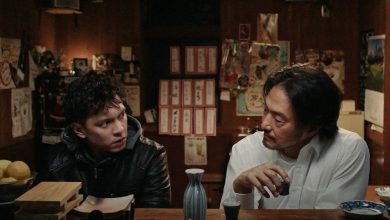MANILA, PHILIPPINES— Growing old is inevitable. It is something human beings deal with from the moment they’re born and none of us can slow it down no matter how we try. Along the way, people develop relationships, settle into routines, and attempt to make their respective marks on this world we live in. For the vast majority of us, however, not everyone has remarkable lives and some of those relationships end up being cast aside as we move on. It also becomes difficult to not just find regular employment but also to maintain a place one can call home over the course of a lifetime. These are the themes that resonate in director Chloe Zhao’s Nomadland.
In 2011, Fern (Frances McDormand), loses her job at the U.S. Gypsum plant in Empire, Nevada when a reduced demand for sheetrock caused its closure after 88 years of operation. The town of Empire was so reliant on the plant that when it shut down, six months later, its zip code of 89405 was discontinued. Recently widowed, Fern sells most of her belongings and decides to live in a van while traveling the country and looking for employment.
Adapting a nomadic lifestyle, Fern meets Linda May, a fellow nomad who invites Fern to a rendezvous with others like themselves in Arizona. This was organized by van-dwelling advocate Bob Wells, who has helped create a support system for others who have chosen simple living whether it be in a roving vehicle (RV), van, car, or other mobile vehicles. Fern interacts with other nomads while learning self-sufficiency skills that are taught to one another.
Among the nomads she meets is Swankie, who has been diagnosed with terminal cancer but chooses to want to make good memories instead of seeing her life withering away in a hospital. Fern befriends David (David Stathairn) even as they take jobs at a national park and later at a restaurant in South Dakota. When David’s son visits him and asks him to meet his grandchild, Fern encourages him to go back to his family.
Another job at a beet processing plant sees Fern’s van breaking down but she cannot afford to have it repaired. This forces Fern to reconnect with her sister Dolly (Melissa Smith) in California. Dolly professes her admiration for Fern’s bravery to become a nomad but asks her to move in with her own family while informing Fern that she left a big hole in her life when she left home to get married and move to Empire years ago. Even as Fern deals with that revelation, her new life free from the constraints of society keep calling her back to drive on to the next stop.
Based on the book Nomadland: Surviving America in the Twenty-First Century by Jessica Bruder, the film adaptation of Nomadland shines a light on a segment of American society that most of its citizens probably do not know exist. Unlike the homeless who exist in most countries, these nomads have chosen to live this lifestyle of moving from town to town and never putting down roots while trying to make a living and live out of their vehicles. It’s a concept that is alien to most of us who live in actual homes, whether it be as homeowners or tenants of a house or condo unit yet it has become more and more prevalent in a country that is as large as the United States.
Director Zhao uses actual nomads like Bob Wells, Linda May, Swankie, and others to present a move authentic image of those who live this lifestyle and there is an earnestness when they are onscreen talking about why this is the life they have chosen to lead.
There is no doubt that Nomadland is a story of loneliness and loss in the 21st century. The fact of the matter is that McDormand’s character of Fern suffered the loss of her husband, her job, and her home, all forcing her to adapt and become a nomad to make ends meet. Yet Fern is characterized as someone who never really wanted to plant roots in the first place, as evidenced by her sister Dolly sharing a story of Fern’s desire to leave their house as soon as she could. There was something inherent in her that kept her from being too attached to people or to a place that even when her family and David’s own family offer her home or a place to stay, Fern still chooses to leave instead. There is perhaps a desire not to be dependent on anyone except herself or perhaps there is a fear of attachment eventually leading to sadness when those people are gone, as what happened when Fern’s husband passed away.
The cinematography by Joshua James Richards paints a beautiful picture of life on the road for the nomads and serves as a stark contrast to the loneliness that some of them have been feeling. With most of the film shot in western states like Nevada, Arizona, and California, the wide-open spaces and colorful sunsets presented show part of the appeal of this lifestyle. Although the shots of Dolly’s home and the house of David’s family are pleasant, they pale in comparison to the colorful skies that Fern and her friends see daily while living out of their vans.
Nomadland has already received several awards and accolades since its release and there is a strong possibility that some other top-tier awards await it in the near future. Zhao won Best Director while the film won Best Motion Picture-Drama at the 78th Golden Globe Awards. In a few weeks, this motion picture may prove to be a big winner at the 93rd Academy Awards. It has been nominated for Best Picture, Zhao for Best Director, Best Adapted Screenplay, and Best Film Editing, Richards for Best Cinematography, and McDormand for Best Actress. Should McDormand win, this would be her third Best Actress Oscar after previous wins for Fargo in 1997 and Three Billboards Outside Ebbing, Missouri in 2018.










